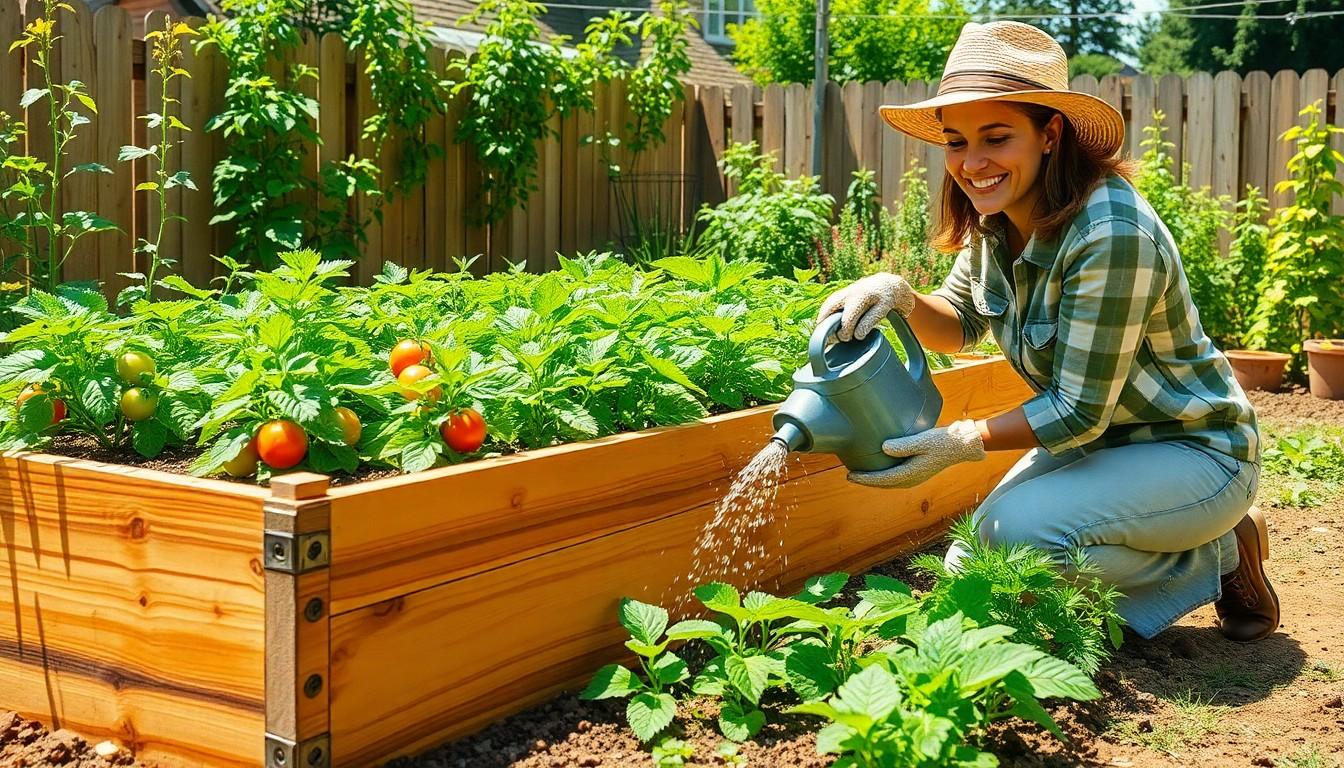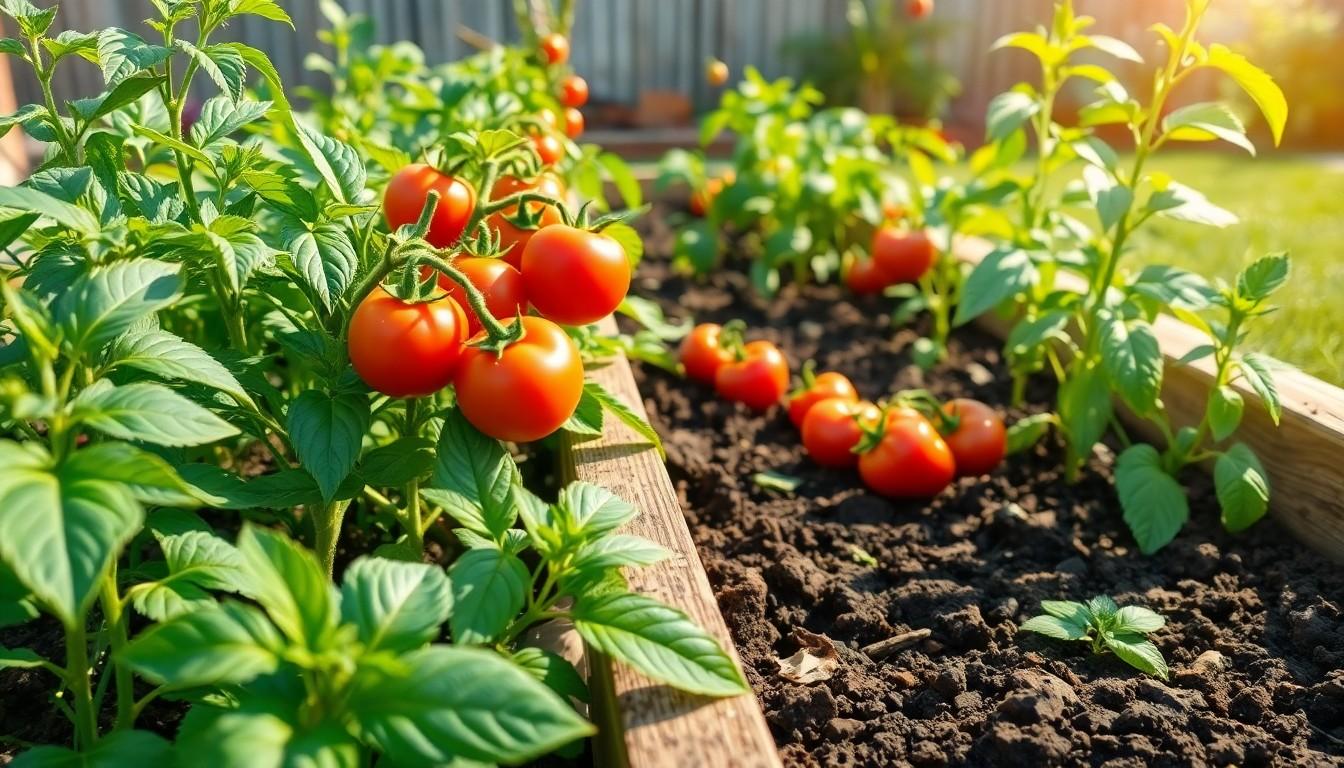The Best Fluffy Pancakes recipe you will fall in love with. Full of tips and tricks to help you make the best pancakes.

Raised Bed Vegetable Garden Plans: Transform Your Garden Today
Imagine stepping into your backyard and being greeted by a vibrant patch of veggies, all neatly organized in raised beds. Raised bed vegetable gardening isn’t just a trend; it’s a ticket to fresh produce, less back pain, and the chance to impress your friends with your green thumb. Who knew growing your own tomatoes could make you the neighborhood superstar?
Overview of Raised Bed Vegetable Garden Plans
Raised bed vegetable gardens offer various layout and design options, making them adaptable to different spaces and preferences. Gardeners can choose sizes ranging from small, compact beds to larger, sprawling plots, depending on available space and desired yield. Each bed provides improved drainage and soil quality, enhancing plant growth.
Customization of raised beds is simple. Materials like wood, stone, or composite boards work well and allow for unique aesthetics. Selecting the right location plays a crucial role in sun exposure. Most vegetable plants thrive in six to eight hours of sunlight daily.
Plant selection varies based on climate and season. Popular choices include tomatoes, peppers, cucumbers, and lettuce, all of which thrive in raised beds. Crop rotation plans ensure soil health and prevent the accumulation of pests and diseases, promoting higher yields.
Spacing between plants affects growth and airflow. Implementing an ideal spacing guideline within each bed increases plant vitality. Experienced gardeners recommend companion planting, where specific plants benefit each other, maximizing space and efficacy.
Irrigation systems can enhance productivity in raised beds. Drip irrigation ensures consistent moisture while minimizing water waste. Additionally, using mulch retains moisture and suppresses weeds, making maintenance more manageable.
Planning for accessibility is essential for ease of use. Designing paths wide enough for movement and ensuring that beds are no more than four feet wide allows for easier reach across the garden. Such considerations contribute to a functional and enjoyable gardening experience.
Benefits of Raised Bed Gardening

Raised bed gardening offers numerous advantages that enhance the gardening experience and plant health.
Improved Soil Quality
Soil quality significantly improves in raised beds. It’s easier to control the soil composition, allowing for a balanced blend of nutrients. Vegetable plants thrive in well-drained, fertile soil enriched with organic matter. Gardeners can amend soil based on specific crop needs through regular monitoring. Choose quality compost and amendments for optimal growth. Control over soil pH and nutrient levels creates the ideal growing environment for vegetables like tomatoes and peppers.
Enhanced Drainage
Drainage improves dramatically in raised bed gardens. Elevated beds promote quicker water runoff and prevent soil saturation. Excess water drains effectively, reducing the risk of root rot in plants. This is crucial for moisture-sensitive crops such as lettuce and cucumbers. Gardeners can add drainage materials like gravel or sand to enhance this benefit further. Overall, excellent drainage ensures healthier root systems and robust plant growth.
Types of Raised Bed Designs
Various raised bed designs cater to gardening needs and enhance the overall gardening experience. Each design offers unique benefits suitable for different preferences and spaces.
Simple Wooden Frames
Simple wooden frames stand out for their ease of construction and aesthetic appeal. Typically, these frames consist of untreated or treated lumber, creating a rustic, natural look. Setting up involves arranging the lumber in rectangular or square shapes, secured with screws or brackets for stability. Soil fills the frames, promoting healthy drainage and preventing soil compaction. Gardeners appreciate these frames for their versatility, making them suitable for diverse vegetables and ornamental plants. Overall, simple wooden frames serve as an accessible option for beginners and experienced gardeners alike.
Elevated Gardens
Elevated gardens provide convenient gardening solutions by minimizing bending and kneeling. These structures can be built using various materials, such as wood or metal, and often feature legs to raise the planting area. Constructed at waist height, elevated gardens facilitate easier access to plants while also preventing pests from reaching the crops. Enhanced drainage occurs due to the increased elevation, allowing for optimal moisture control. Many gardeners prefer this design for its ability to create a distinct, organized look while promoting healthy plant growth. Elevated gardens combine practicality with aesthetic appeal, significantly elevating the gardening experience.
Planning Your Raised Bed Vegetable Garden
Effective planning enhances the success of a raised bed vegetable garden. Critical factors include location and vegetable selection.
Choosing the Right Location
Proper sunlight exposure ensures healthy plant growth. Select a site that receives at least six hours of direct sunlight daily. Avoid areas shaded by buildings or trees. Adequate drainage plays a significant role, so locate the garden on slightly elevated ground to prevent water pooling. Easy access simplifies maintenance tasks like watering and harvesting. Keep proximity to a water source in mind to facilitate effortless irrigation. Lastly, consider the overall layout of the garden space; the design should fit harmoniously within the existing landscape.
Selecting Suitable Vegetables
Choosing vegetables based on climate conditions ensures successful gardening endeavors. Research local growing seasons to identify vegetables that thrive in the region. Consider popular options like tomatoes, peppers, and cucumbers that consistently do well. Planting complementary varieties promotes healthier growth; for instance, pairing tomatoes with basil enhances flavors. Additionally, think about space requirements as some plants need more room than others. Row crops like carrots benefit from wider spacing, while leafy greens can be planted more closely. Implement rotations and seasonal planning to maintain soil health and maximize yield.
Construction Tips for Raised Beds
Constructing raised beds requires careful selection of materials and a clear understanding of assembly techniques. Following these tips ensures a functional and durable garden.
Materials Needed
Wood remains a popular choice for raised beds, with options such as cedar and redwood offering natural rot resistance. Concrete blocks provide sturdy, long-lasting alternatives. Metal sheets also work well, enhancing aesthetics and ensuring durability. Soil mix combines compost, topsoil, and other organic materials. Using untreated wood ensures the absence of harmful chemicals. In addition to the main materials, necessary tools include a saw, drill, and screws for assembly.
Assembly Instructions
Begin by selecting a flat area with adequate sunlight. Cut the wood to your desired dimensions for the raised bed, typically 4 feet by 8 feet or 4 feet by 4 feet. Assemble the frame by securing corners with screws, ensuring stability. Place the frame in the chosen spot and level it if needed. Fill the frame with the soil mix, leaving space for planting. Add mulch to reduce weeds and retain moisture. Finally, install any irrigation systems at this stage for optimal plant care.
Maintenance Strategies for Success
Maintaining a raised bed vegetable garden requires consistent attention to both watering and pest control.
Watering Techniques
Proper watering is crucial for healthy plant growth. Implementing a drip irrigation system promotes consistent moisture delivery directly to roots, minimizing evaporation. Using soaker hoses can also effectively water plants without wetting foliage, reducing disease risk. Consider watering in the early morning or late afternoon to avoid excessive evaporation during peak heat. Monitoring soil moisture levels regularly ensures plants receive adequate hydration, promoting robust growth and fruit development.
Pest Control Measures
Effective pest control enhances garden productivity. Utilizing physical barriers, such as row covers or nets, prevents insect access to plants. Introducing beneficial insects, like ladybugs and lacewings, naturally combats pests while maintaining ecological balance. Regularly inspecting plants for signs of infestations allows for early intervention. Implementing companion planting also offers a strategic advantage; marigolds, for example, repel nematodes and aphids, safeguarding vegetable crops while enhancing overall health.
Conclusion
Creating a raised bed vegetable garden opens up a world of possibilities for both novice and experienced gardeners. With careful planning and thoughtful design, anyone can enjoy the benefits of fresh produce right from their backyard. The versatility of raised beds allows for customization to fit unique spaces and preferences while promoting healthier plant growth through improved soil quality and drainage.
By selecting the right materials and following essential maintenance practices, gardeners can ensure a thriving environment for their vegetables. Whether it’s tomatoes, peppers, or cucumbers, the rewards of a productive garden are well worth the effort. Embracing raised bed gardening not only enhances one’s gardening skills but also fosters a deeper connection to the food they grow.
